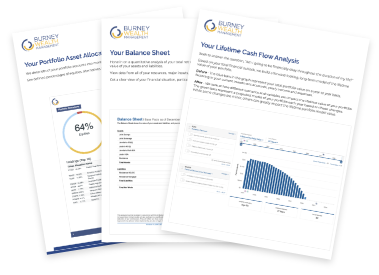Now is the Time...529!

As a parent, planning ahead for your children’s future can seem daunting; especially when it comes to college savings. When is the best time to start, how much should you be contributing, is there a minimum? The biggest item to remember is that it is never too early to start and every dollar put towards a 529 plan will help. As a proud parent to two kids, with my oldest Shailee, having just completed her first year of college, and my son Shaan not too far behind; I understand the urgency you feel. We started saving for Shailee when she was born, with about a hundred dollars at a time every month. Once she got older, we created a habitual task of having her involved in prioritizing savings. She would put part of her birthday and holiday gifts into long-term savings, which I would then match to encourage her to save even more. From one parent to another, start small if needed, involve your children with their savings if you can, and remember that it’s never too late to start planning for the future.
A 529 plan is a college savings vehicle for parents, grandparents, and anyone else who wants to help pay for a beneficiary’s college education. There are two types of 529 plans: prepaid tuition plans and education savings plans. Prepaid tuition plans allow the account owner to pay in advance for tuition at designated colleges and universities, locking in at today’s cost. Education savings plans grow tax-deferred and withdrawals are tax free when used for qualified education expenses.
According to savingforcollege.com here are the top 7 benefits of a 529 plan:
1. 529 plans offer unsurpassed income tax breaks
- Although contributions are not deductible, earnings in a 529 plan grow federal tax-free and will not be taxed when the money is taken out to pay for college. As of January 1, 2018, tax-free withdrawals may also include up to $10,000 in tuition expenses for private, public or religious elementary and secondary schools (per year, per beneficiary), and in 2019 student loan payments and costs of apprenticeship programs were added as qualified education expenses.
- Other savings vehicles, such as mutual funds, will give up a portion of their earnings to annual income taxes and also get hit with a capital gains tax at withdrawal.
- This has been a huge incentive for Americans to save for college. The tax treatment was made permanent with the Pension Protection Act of 2006.
2. Your own state may offer tax breaks as well
- In addition to the federal tax savings, over 30 states currently offer a full or partial tax deduction or credit for 529 plan contributions.
- You can generally claim state tax benefits each year you contribute to your 529 plan, so it’s a smart idea to continue keep making deposits until you’ve paid your last tuition bill.
- Be sure to research all of your options. If your state doesn’t offer benefits for residents, you can choose any other state’s plan.
3. You, the donor, stay in control of the account
- With few exceptions, the named beneficiary has no legal rights to the funds in a 529 account, so you can assure the money will be used for its intended purpose.
- This differs from custodial accounts under UGMA/UTMA, where the child takes control of the assets once he or she reaches legal age.
- A 529 account owner can withdraw funds at any time for any reason – but keep in mind that the earnings portion of non-qualified withdrawals will incur income tax and an additional 10% penalty tax.
4. Low maintenance
- A 529 plan is a very hands-off way to save for education -to enroll, simply visit our Best 529 Plans page and select the plan you like best or contact your financial advisor.
- Most plans allow you to ‘set it and forget it’ with automatic investments that link to your bank account or payroll deduction plans.
- The ongoing investment management of the account is handled by an outside investment company hired as the program manager or by the state treasurer’s office
5. Simplified tax reporting
- Contributions to a 529 plan do not have to be reported on your federal tax return.
- You won’t receive a Form 1099 to report taxable or nontaxable earnings until the year you make withdrawals.
- In 2022, deposits to a 529 plan up to $16,000 per individual per year ($32,000 for married couples filing jointly) will qualify for the annual gift tax exclusion.
6. Flexibility
- You can change your 529 plan investment options twice per calendar year.
- You can rollover your funds into another 529 plan one time in a 12-month period.
- Hint: There is no federal limit on the frequency of these changes if you replace the account beneficiary with another qualifying family member at the same time.
7. Everyone is eligible take advantage of a 529 plan
- Unlike Roth IRAs and Coverdell Education Savings Accounts, 529 plans have no income limits, age limits or annual contribution limits.
- There are lifetime contribution limits, which vary by plan, ranging from $235,000 – $550,000.
- Those looking to reduce estate taxes can elect treat a 529 plan contribution of between $16,000 and $80,000 as if it were made over a five calendar-year period to qualify for the annual gift tax exclusion.
The Burney Company is an SEC-registered investment adviser. Burney Wealth Management is a division of the Burney Company. Registration with the SEC or any state securities authority does not imply that Burney Company or any of its principals or employees possesses a particular level of skill or training in the investment advisory business or any other business. Burney Company does not provide legal, tax, or accounting advice, but offers it through third parties. Before making any financial decisions, clients should consult their legal and/or tax advisors.





